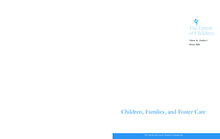Public Law 109-95, the Assistance for Orphans and Other Vulnerable Children in Developing Countries Act of 2005 (herein after referred to as PL 109-95), was signed into law four years ago to respond to the global orphans and vulnerable children crisis. It calls for the U.S. Government (USG) response to the crisis to be comprehensive, coordinated and effective.
U.S. Government and Partners: Working Together on a Comprehensive, Coordinated and Effective Response to Highly Vulnerable Children: Third Annual Report to Congress on Public Law 109-95 provides global estimates of the number of highly vulnerable children; a summary of USG assistance programs for highly vulnerable children; a summary of progress coordinating the response among USG agencies; key strategic issues and opportunities; priorities for 2009–2010 – and beyond; and a summary of the results and achievements of USG assistance.
The magnitude of the orphans and vulnerable children crisis remains deeply distressing, and the situation for children is likely worsening due to the global economic crisis. Table I provides a global profile of highly vulnerable children. It offers a sobering statistical summary of the effects on children of bad governance, conflict, poverty, disaster, and disease. For example, an estimated 428,000,000 children are living in extreme poverty; 150,000,000 girls have experienced sexual abuse; 18,300,000 children have lost both parents; 2,000,000 children are in institutional care; 218,000,000 children are engaged in various forms of labor; and 1,800,000 children are in prostitution and pornography.
In response to the orphans and vulnerable children crisis, in Fiscal Year (FY) 2008, the USG provided an estimated $1,860,650,020 under programs within the PL 109-95 coordination framework. Twenty-one operating units provided assistance to directly help children in crisis; protect children from crises by addressing the causes of their vulnerability; strengthen family, community, and government capacity to identify and respond to their most vulnerable children; and conduct research and evaluations to identify the most effective interventions to care for and protect children.

